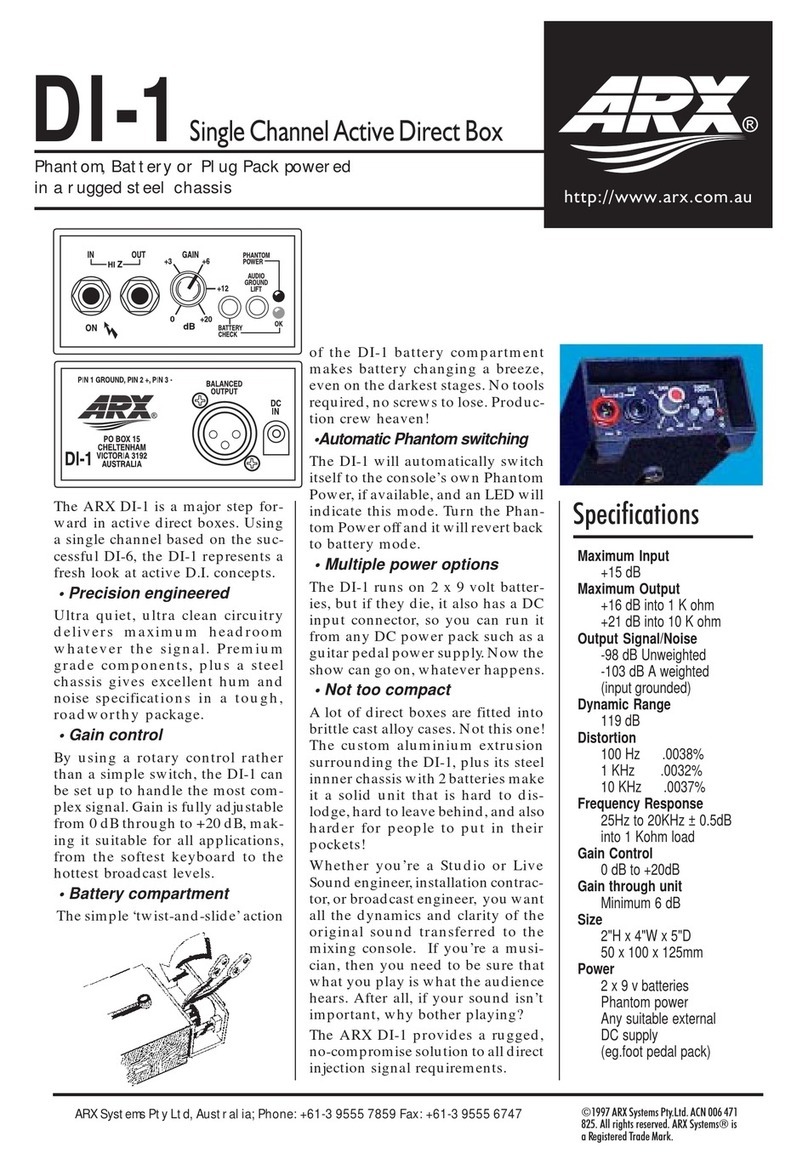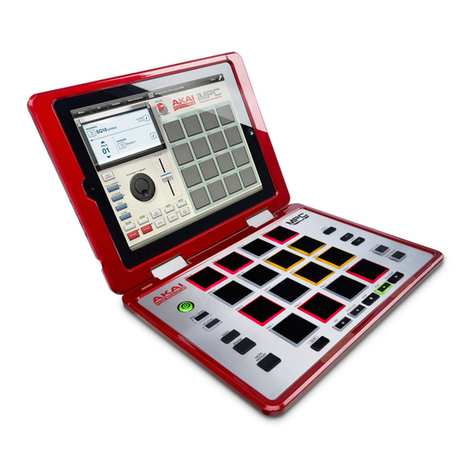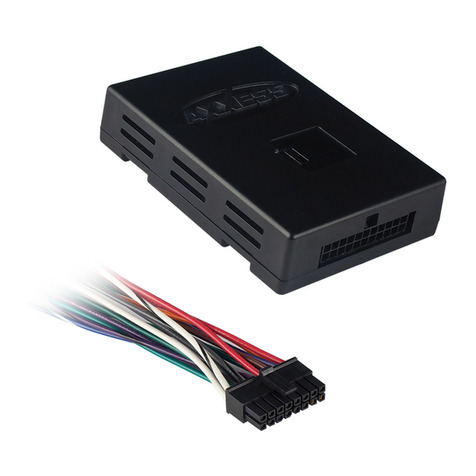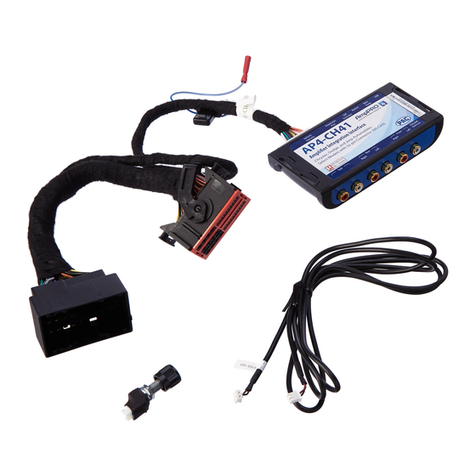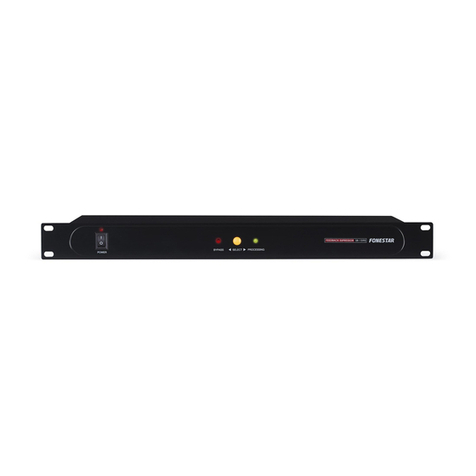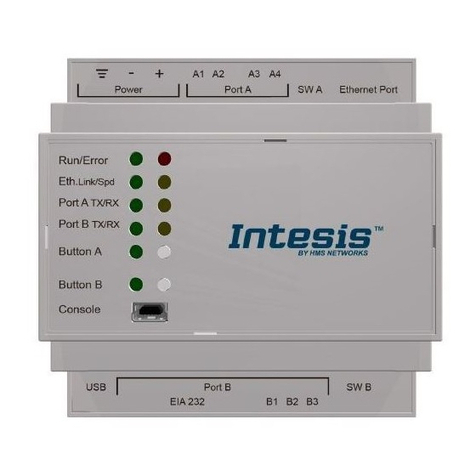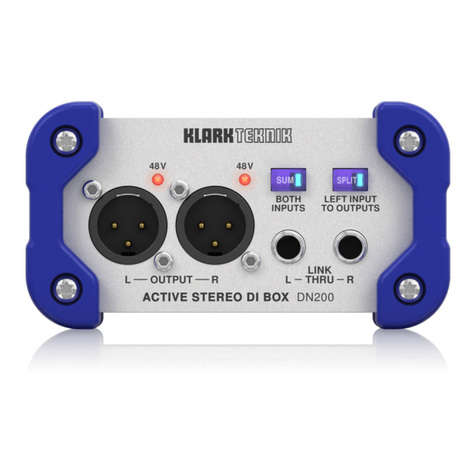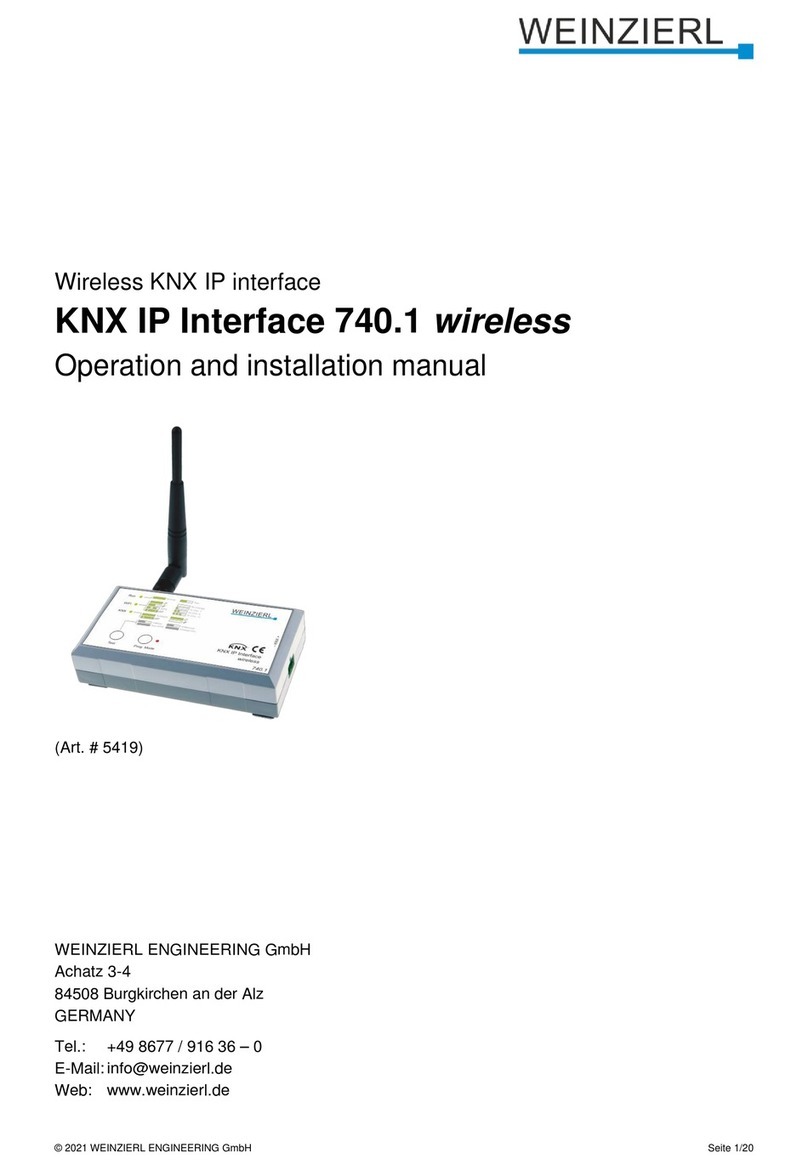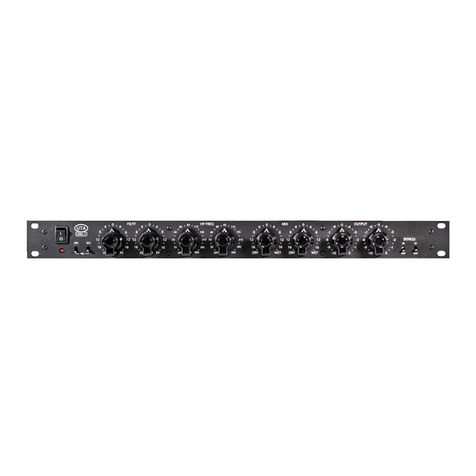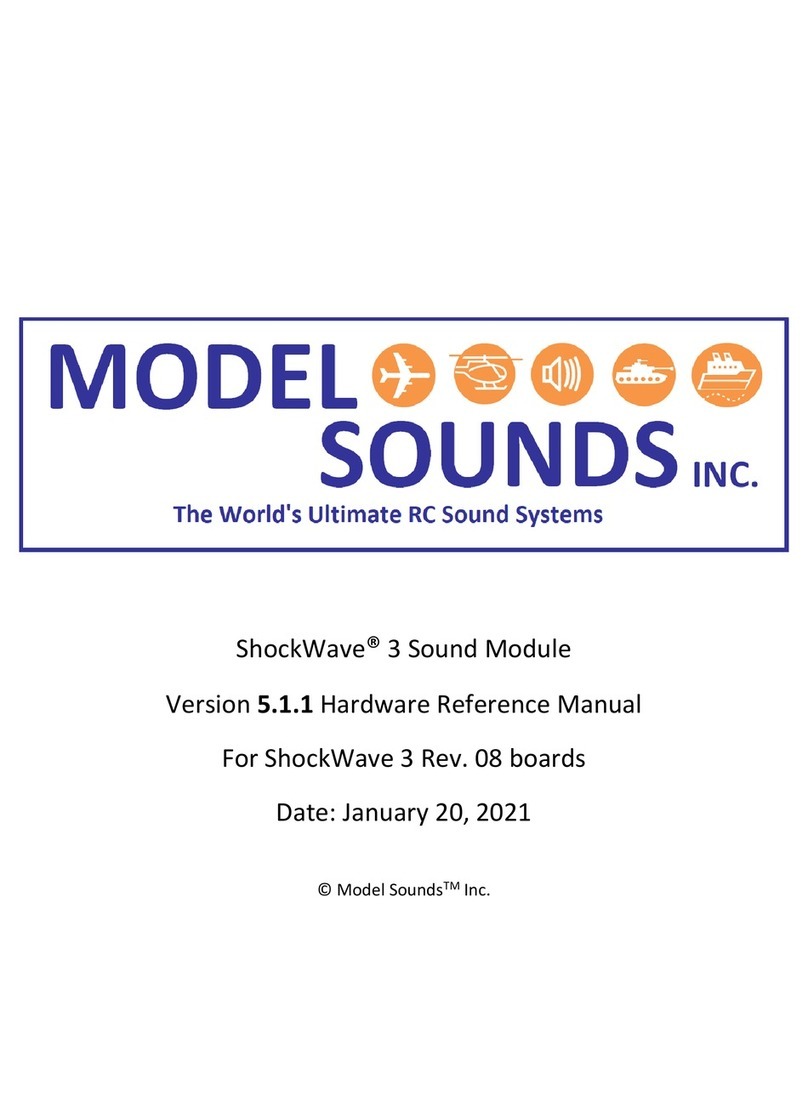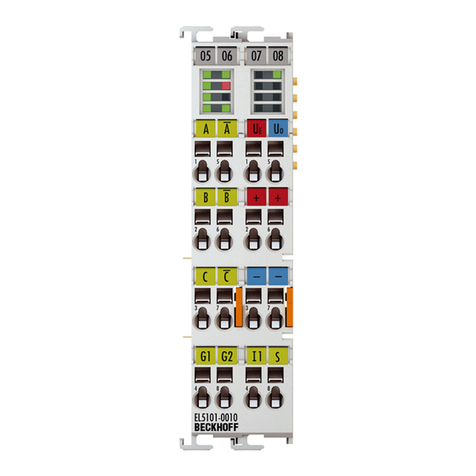Basler BE3-25A User manual

Rev ECA
G 15587
Rev ECO
H 2275
WARNING
To prevent personal injury or equipment damage, only
qualified technicians/operators should install, operate, or
service this device.
CAUTION
Meggers and high potential test equipment should be
used with extreme care. Incorrect use of such
equipment could damage components contained in the
device.
CONFIDENTIAL INFORMATION
of Basler Electric Company, Highland, IL. It is loaned for
confidential use. Subject to return on request and with the
mutual understanding that it will not be used in any manner
detrimental to the interests of Basler Electric Company.
It is not the intention of this manual to cover all details and
variations in equipment, nor does it provide data for every
possible contingency regarding installation or operation. The
availability and design of all features and options are subject
to change without notice. Should further information be
required, call Basler Electric Company, Highland, IL.
Courtesy of NationalSwitchgear.com

Table of Contents
i
Paragraph Title Page
SECTION 1 GENERAL INFORMATION
1-1 Description .......................................................................................................1-1
a. General Description..................................................................................1-1
b. Basic Unit Description...............................................................................1-1
c. Frequency/Phase Angle Matching System..............................................1-2
d. Voltage Matching Option ..........................................................................1-2
e. Dead Bus Closing Option .........................................................................1-3
1-2 Specifications...................................................................................................1-3
1-3 Style Chart........................................................................................................1-4
SECTION 2 THEORY OF OPERATION
2-1 System Theory of Operation............................................................................2-1
a. Basic Unit (Without Options)....................................................................2-1
b. Basic Unit (With Options) .........................................................................2-1
2-2 Synchronizer Theory of Operation...................................................................2-2
a. Power Supply............................................................................................2-2
b. Basic Unit..................................................................................................2-2
c. Dead Bus Option.......................................................................................2-3
d. Frequency/Phase Matching Option..........................................................2-3
e. Voltage Matching Option ..........................................................................2-3
SECTION 3 CONTROLS, INDICATORS, & JUMPERS
3-1 Controls............................................................................................................3-1
3-2 Indicators..........................................................................................................3-1
3-3 Jumpers............................................................................................................3-7
SECTION 4 INSTALLATION & OPERATION
4-1 Installation ........................................................................................................4-1
4-2 Interconnection.................................................................................................4-1
a. Power and Sensing Connections.............................................................4-1
b. Circuit Breaker (SYNC) Connection.........................................................4-4
c. Voltage Regulator and/or Governor "Raise/Lower" Connections............4-4
d. Summing Point Governor Connection......................................................4-4
e. Summing Point Voltage Regulator Connection........................................4-7
4-3 Operation..........................................................................................................4-9
a. Initial Set-up..............................................................................................4-9
b. Pre-Operational Check-Out....................................................................4-10
c. Operation ................................................................................................4-10
SECTION 5 MAINTENANCE
5-1 Preventive Maintenance ..................................................................................5-1
5-2 Troubleshooting ...............................................................................................5-1
SECTION 6 REPLACEMENT PARTS
6-1 General.............................................................................................................6-1
Courtesy of NationalSwitchgear.com

List of Illustrations
List of Tables
ii
Figure Title Page
1-1 BE3-25A Style Chart.................................................................................1-4
2-1 System Block Diagram.............................................................................2-1
2-2 Synchronizer Block Diagram....................................................................2-4
3-1 Controls, Indicators, and Jumpers ...........................................................3-2
3-1A Style A2N..................................................................................................3-3
3-1B Style B1D..................................................................................................3-4
3-1C Style C2D..................................................................................................3-5
3-1D Style W1D.................................................................................................3-6
3-2 Governor Stability Jumper........................................................................3-7
4-1 BE3-25A Outline Drawing.........................................................................4-1
4-2 Power and Sensing Connection, 240 Vac, Power from Bus...................4-2
4-3 Power and Sensing Connection, 240 Vac, Power from Generator.........4-2
4-4 Power and Sensing Connection, 120 Vac, Power from Bus...................4-3
4-5 Power and Sensing Connection, 120 Vac, Power from Generator.........4-3
4-6 Raise/Lower Contact Interconnection......................................................4-4
4-7 Barber Coleman DYN1 Interconnection...................................................4-5
4-8 Barber Coleman ILS Interconnection.......................................................4-5
4-9 Woodward 2301 Interconnection .............................................................4-6
4-10 Woodward 1712-1724 Interconnection....................................................4-6
4-11 Woodward 2301A Interconnection...........................................................4-6
4-12 AMBAC International CU673C Interconnection.......................................4-7
4-13 KR, SR-F, SR-E, SR-H Interconnection...................................................4-7
4-14 SR4A and SR8A Interconnection.............................................................4-8
4-15 XR2001, XR2002, and XR2003 Interconnection.....................................4-8
4-16 SSE and SER-CB Interconnection...........................................................4-8
4-17 SSR Interconnection.................................................................................4-9
Table Title Page
1-1 Physical Specifications .............................................................................1-3
1-2 Electrical Specifications............................................................................1-4
3-1 Controls.....................................................................................................3-1
3-2 Indicators...................................................................................................3-1
3-3 Jumpers....................................................................................................3-7
4-1 BE3-25A and Breaker Connections.........................................................4-4
5-1 Troubleshooting Chart..............................................................................5-1
6-1 Replacement Parts...................................................................................6-1
Courtesy of NationalSwitchgear.com

1
-
1
a. General Description. The Basler BE3-25A Auto-Synchronizer provides automatic
synchronization of an oncoming generator with a bus or another generator. The Synchronizer
supplies correction signals to the oncoming generator to match it to the bus or to another generator
for frequency, phase angle, and voltage before being closed into the circuit. Options allow for dead
bus closing and a variety of output configurations for frequency/phase matching and voltage
matching. Construction consists of a case enclosed circuit board with external terminal connections.
A TEST/OPERATE switch, LED SYNC and POWER indicators and all operational adjustments are
located on the front panel or are accessible through access holes in the front panel.
b. Basic Unit Description.
(1) The basic BE3-25A Auto-Synchronizer monitors both the oncoming generator and bus
voltages then permits synchronizing the generator to an energized station bus or to another genera-
tor when the following predetermined conditions are satisfied:
(a) The frequency of the oncoming generator and the bus are matched to within ±0.1 Hertz.
This corresponds to a slip frequency of ±0.1 Hertz or less.
(b) The phase angle between the oncoming generator voltage and the bus voltage is less
than or equal to the allowable limit determined by the front panel setting. This limit is
established by the position of the front panel BREAKER CLOSING ANGLE switch with
settings of ±5°,±10°,±15°, and ±20°.
(c) The difference between the generator and bus voltage is less than the selected voltage
difference setting which is continuously adjustable over the range of ±5% to ±15% of the
bus voltage.
(2) When a jumper is connected across the 0.75 Second Time Delay terminals of the Synchro-
nizer (terminals D1 and D2), the generator will be synchronized only when the generator output
voltage is within the selected voltage difference setting and the measured phase angle and differ-
ence (slip) frequency are less than the following:
Phase Angle
Setting Max. Slip
Frequency
±5°±0.037 Hz
±10°±0.074 Hz
±15°±0.1 Hz
±20°±0.1 Hz
(3) When the phase angle, frequency, and voltage are within predetermined limits, the Synchro-
nizer energizes the isolated synchronizing output relay to initiate generator circuit breaker closure.
The front panel SYNC indicator will illuminate and the frequency and phase angle correction signals
are automatically reset. The correction signals can be reset manually by connecting a normally open
contact between the Reset terminals of the Synchronizer (terminals R1 and R2). Closure of the
synchronizing output relay within the synchronizing parameters will automatically reset the correction
output signals.
SECTION 1
GENERAL INFORMATION
1-1. DESCRIPTION
Courtesy of NationalSwitchgear.com

1
-
2
(4) Upon a loss of power (power input falls below 85 Vac for 50 and 60 Hertz systems) or
removal of either the bus or generator sensing input voltage, the Synchronizer will immediately
remove all output correction signals to the governor or voltage regulator.
(5) A built-in "operational test" mode can be used to verify Synchronizer operation when
connected to the generator. The Sync Output Relay is inhibited from operating when the
TEST/OPERATE switch is set to the TEST position. A red LED (SYNC) on the front panel will
illuminate whenever the frequency, phase angle, and voltage are all within the contact closure
parameters.
c. Frequency/Phase Angle Matching System.
(1) The frequency/phase angle matching options in the Synchronizer provide correction signals
to the generator governor control. Two types of frequency/phase angle matching are available:
(a) "Bipolar" governor correction signals (summing point) for use with most common
electronic type governor controls manufactured by AMBAC International, Barber Coleman, and
Woodward. Summing point frequency correction signals are output at maximum until the generator
frequency is corrected to within ±3 Hertz of the station bus frequency. Once the ±3 Hertz limit is
attained, the output signals become proportional to the amount of the difference frequency (i.e.: the
output for a 3 Hertz difference is larger than the output for a 1 Hertz difference).
(b) A "raise/lower" output contact signal for use with hydraulic type governors and motor
operated controls. Contact type correction signals are output as a contact closure. When the phase
angle is 0°or within the front panel setting for acceptable phase conditions, the contacts open and
remain open. At any phase angle greater than the front panel setting, the contacts are closed.
(2) The output signals will continue until the conditions for breaker closure are satisfied.
d. Voltage Matching Option.
(1) When the voltage matching option is specified, the Synchronizer provides correction signals
to the generator voltage regulator or excitation system when the voltage difference between the
generator voltage and the bus voltage exceeds the ±1% to ±5% of the bus voltage range as deter-
mined by the front panel setting.
(2) Two types of voltage matching are available:
(a) "Bipolar" regulator correction signals for use with the summing point input of Basler
Electric voltage regulators (types: SSR, SR, KR, and XR) and exciter regulators (types: SSE and
SER-CB).
(b) A "raise/lower" output contact signal for with motor operated controls (Basler Electric
type: MOC).
(3) The voltage differential is selectable in 1% increments over a range of ±1% to ±5% by a
front panel accessible rotary switch.
NOTE
If the governor control, actuator, and associated linkage are
not properly adjusted, the BE3-25A output may not be able to
drive the governor far enough to allow synchronization.
Courtesy of NationalSwitchgear.com

1
-
3
(4) The correction signals are proportional to the magnitude of the sensed voltage difference
only for summing point outputs. The signals are output until the conditions for breaker closure are
satisfied. For output contacts, the contacts are closed until the conditions for acceptable breaker
closure are attained.
e. Dead Bus Closing Option. Upon detection of a dead bus condition, and when the generator
output voltage is above the minimum voltage level, the Synchronizer will automatically close the
breaker. The maximum allowable dead bus voltage is adjustable from 10 V to 50 V (at the 120 V
tap) by a front panel accessible potentiometer. This option can be disabled by the removal of a
terminal strip mounted jumper. For this option to function, input power must be from the generator or
from an external source other than the bus.
Refer to Table 1-1 for the physical specifications and to Table 1-2 for the electrical specifications.
Table 1-1. Physical Specifications.
Storage Temperature: -85°F (-65°C) to +185°F (+85°C)
Operating Temprature: -40°F (-40°C) to +158°F (+70°C)
Shock: Withstands up to 15 G's in any of three mutually perpendicular
axes.
Vibration: Withstands the following:
5 to 18 Hz at 0.06 inch double amplitude
18 to 30 Hz at 1 G
30 to 48 Hz at 0.02 inch double amplitude
48 to 70 Hz at 2.5 G's
Weight: 4 lbs. (1.82 kg)
NOTE
If the voltage regulator is not properly adjusted, the BE3-25A output
may not be able to drive the regulator far enough to allow synchroni-
zation.
1-2. SPECIFICATIONS
Courtesy of NationalSwitchgear.com

1
-
4
Table 1-2. Electrical Specifications.
Input Sensing and Oper-
ating Power: 120 Vac Nominal (80 - 140 Vac); 50 Hz,
120 Vac Nominal (87 - 153 Vac); 60 Hz,
240 Vac Nominal (180 - 264 Vac); 50 Hz,
240 Vac Nominal (167 - 304 Vac); 60 Hz.
Input Power Burden: Operating: 11 VA,
Sensing: 2 VA.
Output Contact Rating:
Sync Contact (Close Breaker):
120 Vac @ 10 A resistive,
220 Vac @ 7.5 A resistive,
28 Vac @ 10 A resistive.
Raise/Lower (Voltage/Frequency Matching):
120 Vac @ 10 A resistive,
240 Vac @ 6 A resistive,
28 Vac @ 6 A resistive.
Summing Point Frequen-
cy Matching Output
(Open Breaker Condi-
tion):
Option A: +10 Vdc to 0 Vdc to provide ±3 Hz of Control.
Option B: ±4 Vdc to provide ±3 Hz of Control.
Option W: ±7 Vdc to provide ±3 Hz of Control.
Summing Point Voltage
Matching Output (Open
Breaker Condition):
Option 1: +10 Vdc maximum.
The model number of the Synchronizer is a combination of letters and numbers indicating the
features and options. Refer to Figure 1-1 for the style chart which shows the various options and
features.
1-3. STYLE CHART
Figure 1-1. BE3-25A Style Chart.
Courtesy of NationalSwitchgear.com

2
-
1
a. Basic Unit(without Options) System Theory of Operation.
(1) As the prime mover brings the oncoming generator up to rated speed, the generated voltage
is applied to the Synchronizer. When the generator output voltage reaches 85 Vac for 50 Hertz and
60 Hertz systems, the Synchronizer will begin sensing both the generator and bus for frequency,
phase angle, and voltage.
(2) When the Synchronizer senses that all parameters for the oncoming generator are matched
with the bus, the Breaker Close Contact is energized to initiate a breaker closure that will connect the
oncoming generator to the bus.
b. Basic Unit (With Options) System Theory of Operation.
(1) Frequency/Phase Correction Option.
(a) If the output is a summing point type, then the frequency correction output signals are at
maximum until the generator frequency is corrected to within ±3 Hertz of the station bus frequency.
Once the ±3 Hertz limit is reached, the output signals become proportional to the difference
SECTION 2
THEORY OF OPERATION
2-1. SYSTEM THEORY OF OPERATION (Refer to Figure 2-1)
Figure 2-1. System Block Diagram.
NOTE
Even though the BE3-25A always has frequency matching, for pur-
poses of discussion, it is considered an option because of the two
types that may be selected (summing point or contacts).
Courtesy of NationalSwitchgear.com

2
-
2
frequency (i.e.: the output for a 3 Hertz difference is larger than that for a 1 Hertz difference.) If the
Reset jumper is installed to provide internal operation, the signals will continue being output until the
phase angle is within the front panel setting. If the Reset function is being controlled externally, the
correction signals will continue until the external reset contacts are closed.
(b) If the output type is a contact closure, then the contacts are closed at any phase angle
greater than the front panel setting and are open only if the phase angle is 0°or if the phase angle is
within the front panel setting for acceptable phase conditions.
(2) Voltage Correction Option.
An optional voltage option may be installed. When this option
is installed, it operates as follows:
(a) If the output is a summing point type, the Synchronizer outputs a "bipolar" correction
signal that is proportional to the amount of voltage difference (i.e.: the larger the voltage difference
between the bus voltage and the generator voltage, the larger the correction signal). If the Reset
jumper is installed to provide internal operation, the signals will continue being output until the
difference voltage is within the front panel setting. If the Reset function is being controlled externally,
the correction signals will continue until the external reset contacts are closed.
(b) If the output type is a contact closure, then the contacts are closed at any difference
voltage greater than the front panel setting and are open only if the difference voltage is within the
front panel setting for acceptable synchronizing conditions.
(3) Dead Bus Connection Option.
This option will allow a breaker closure to occur even
though the bus is dead or extremely low (i.e.: a maximum of 10 - 50 Vac is present).
a. Power Supply Theory of Operation. Either the oncoming generator or the bus voltage is fed to
the Synchronizer Power Supply. The Power Supply steps the voltage down and rectifies it to provide
a +12 Vdc and a -12 Vdc output.
b. Basic Unit Theory of Operation.
(1) Generator and Bus Sensing.
The oncoming generator and bus voltages are monitored
and processed by the Generator Sensing and Bus Sensing Circuits. The outputs of these circuits
are applied to the 0.1 Hertz Frequency Difference Comparator, the Phase Angle Comparator, and
the Voltage Difference Comparator. The Sensing Circuit outputs are also applied to the following
Option Circuits: Dead Bus, Frequency/Phase Matching, and Voltage Matching.
(2) 0.1 Hertz Frequency Difference Comparator.
The 0.1 Hertz Frequency Difference
Comparator compares the frequencies of the bus and the oncoming generator. IF the frequencies
are within 0.1 Hertz of each other, an output signal is applied to the Gating Network.
(3) Phase Angle Comparator.
The Phase Angle Comparator compares the phase angle of
the bus to that of the oncoming generator. When the phase angle difference becomes less than ±5°
to ±20°(as selected by the front panel potentiometer), the resulting output signal will be applied to
the Gating Network.
(4) Voltage Difference Comparator.
The Voltage Difference Comparator compares the
voltage of the bus to that of the oncoming generator. When the voltage difference becomes less
than ±5% to ±15% (as selected by the front panel potentiometer), the resulting output signal will be
applied to the Gating Network.
(5) Gating/Time Delay Circuitry.
When the 0.1 Hertz Frequency Difference Comparator
output, Phase Angle Comparator output, and the Voltage Difference Comparator output are all
present at the Gating Circuitry input, the Time Delay Circuit will be triggered to start counting down.
All three inputs must be present for at least 0.75 seconds before the Closing Contact Circuit is
2-2. SYNCHRONIZER THEORY OF OPERATION (Refer to Figure 2-2)
Courtesy of NationalSwitchgear.com

2
-
3
energized. If any one of these input signals is removed prior to the end of the countdown (or timing)
period, the Closing Contact Circuit will not be enabled. Removal of the 0.75S DELAY jumper will
bypass this time delay function and thereby provide instantaneous operation of the Closing
Contact Circuit.
(6) Closing Circuit.
(a) When energized, the Closing Contact will cause the front panel SYNC indicator to il-
luminate and the Breaker Closing Output Contacts to close. A reset signal will also be generated to
cause a reset of all control signals.
(b) The front panel TEST switch, when in the TEST position, will allow the front panel
SYNC indicator only to function. The Closing Contact Circuit will be inhibited.
c. Dead Bus Option Theory of Operation. When the sensed bus voltage is less than the dead bus
setting, an output signal is applied to the output circuit to energize the Sync Output Relay and to
illuminate the front panel SYNC indicator. A front panel accessible potentiometer determines the
voltage level for a "dead bus".
d. Frequency/Phase Matching Option Theory of Operation.
(1) The Frequency/Phase Matching Circuit will output signals proportional to the difference
frequency and input them to the Gate Circuit. When the slip (difference) frequency exceeds ±3
Hertz, these correction signals will be at their maximum level. Frequency correction signals are
applied to the output circuits when the sensed input voltages (bus and generator) are above the
minimum voltages given in Table 1-1.
(2) The frequency correction output will either be a "raise/lower" contact for use with motor
operated control (MOC) type governors or a "bipolar" type output for use with summing point type
electronic governors.
e. Voltage Matching Option Theory of Operation.
(1) When the voltage difference between the bus and the oncoming generator is greater than
±1% - ±5% of the bus voltage (as preselected by a switch), the Voltage Matching Circuit will apply a
signal to the Gate Circuit. Voltage correction signals will be applied to the output circuits when the
sensed input voltages (bus and generator) are above the minimum voltages given in Table 1-1.
(2) The voltage correction signals will drive either a "raise/lower" contact type output for use with
motor operated control (MOC) type voltage regulators or a "bipolar" type output for use with the
summing point type input of Basler Electric voltage regulators (types SSR, XR, SR, and KR) and for
exciter regulators (types SSE and SER-CB).
NOTE
Even though the BE3-25A always has frequency matching, for pur-
poses of discussion, it is considered an option because of the two
types that may be selected (summing point or contacts).
Courtesy of NationalSwitchgear.com

3
-
1
The BE3-25A controls are shown in Figure 3-1 and are described in Table 3-1.
Table 3-1. Controls.
CONTROL FUNCTION
TEST/OPERATE Switch Selects either the TEST or the OPERATE Mode.
% VOLT MATCH (5-15)
Potentiometer Selects the maximum voltage difference between the generator
and the bus prior to allowing breaker closure.
± BREAKER CLOSING
ANGLE Switch (5°- 20°)Selects the maximum allowable phase angle difference (in 5°
increments) between the generator and the station bus prior to
breaker closure.
% VOLT MATCH (1, 2, 3, 4,
5) Switch Used to select the voltage difference when using the voltage
matching option.
DEAD BUS (10 V - 50 V)
Potentiometer Used to set the "dead bus" threshold.
GOV STAB Potentiometer Used to adjust the stability and response time of the governor.
REG STAB Potentiometer Used to adjust the stability and response time of the voltage
regulator.
OFFSET ADJ Potentiometer Used to adjust the amount of offset voltage required for the
AMBAC International CU673C governor.
The BE3-25A controls are shown in Figure 3-1 and are described in Table 3-2.
Table 3-2. Indicators.
INDICATOR FUNCTION
POWER Indicator Illuminates to indicate that power is applied to the Synchronizer.
SYNC Indicator Illuminates to indicate that the generator is synchronized with
the bus.
SECTION 3
CONTROLS, INDICATORS, & JUMPERS
3-1. CONTROLS
NOTE
Not all controls are on all styles.
3-2. INDICATORS
Courtesy of NationalSwitchgear.com

3
-
2
NOTE
The front panel shown in Figure 3-1 is a composite to illustrate the
location of the controls and indicators. All of these may not be
included on a given style number. For the right-hand terminal strip
terminal designations, refer to Figure 3-2 and to Section 4.
OPERATETEST
5
4
3
2
1
% VOLT
MATCH
INC GOV.
STAB.
R
2
U
2
3
D
E
T
S
I
L
R
L
U
B240
B120
BC
BUS
SENSE
VOLTS
50/60HZ
50/60HZ
VOLTS
SENSE
GEN
GC
G120
G240
P240
P120
PC
POWER
VOLTS
50/60HZ
R1
R2
D1
D2
RESET
0.75 S.
DELAY
RATING
CONTACT
SYNC
SNC
SNO
SC
10A AT 120 VAC OR 28 VDC
7.5A AT 220 VAC
R
Basler Electric
Highland, Illinois
AUTO-SYNCHRONIZER
MODEL: BE3-25A
POWER
OFFSET
ADJ.
BREAKER
CLOSING ANGLE
+
-
20
10
5
oo
o
15
o
155
% VOLT
MATCH
INC
REG
STAB
10V
DEAD
BUS
50V
SYNC
DB1
DB2
DEAD
BUS
Figure 3-1. Controls, Indicators, and Jumpers.
Courtesy of NationalSwitchgear.com

3
-
3
Figure 3-1A. Style A2N.
OPERATETEST
5
4
3
2
1
% VOLT
MATCH
INC GOV.
STAB.
R
2
U
2
3
D
E
T
S
I
L
R
L
U
B240
B120
BC
BUS
SENSE
VOLTS
50/60HZ
50/60HZ
VOLTS
SENSE
GEN
GC
G120
G240
P240
P120
PC
POWER
VOLTS
50/60HZ
R1
R2
D1
D2
RESET
0.75 S.
DELAY
RATING
CONTACT
SYNC
SNC
SNO
SC
10A AT 120 VAC OR 28 VDC
7.5A AT 220 VAC
R
Basler Electric
Highland, Illinois
AUTO-SYNCHRONIZER
MODEL: BE3-25A
POWER
OFFSET
ADJ.
BREAKER
CLOSING ANGLE
+
-
20
10
5
oo
o
15
o
SYNC
DEAD
BUS
STYLE: A 2 N
RVNC
RVNO
RVC
LVNC
LVNO
LVC
G2
G1
Courtesy of NationalSwitchgear.com

3
-
4
Figure 3-1B. Style B1D.
OPERATETEST
5
4
3
2
1
% VOLT
MATCH
INC GOV.
STAB.
R
2
U
2
3
D
E
T
S
I
L
R
L
U
B240
B120
BC
BUS
SENSE
VOLTS
50/60HZ
50/60HZ
VOLTS
SENSE
GEN
GC
G120
G240
P240
P120
PC
POWER
VOLTS
50/60HZ
R1
R2
D1
D2
RESET
0.75 S.
DELAY
RATING
CONTACT
SYNC
SNC
SNO
SC
10A AT 120 VAC OR 28 VDC
7.5A AT 220 VAC
R
Basler Electric
Highland, Illinois
AUTO-SYNCHRONIZER
MODEL: BE3-25A
POWER
BREAKER
CLOSING ANGLE
+
-
20
10
5
oo
o
15
o
SYNC
DEAD
BUS
STYLE: B 1 D
DB2
DB1
VR4
VR3
VR2
VR1
G1
G2
F
WP
H
ILS
C
INC
REG
STAB
10VDEAD
BUS
50V
REGULATORY
POLARITY
VOLTAGE
REGULATOR
GOV.
STABILITY
RANGE
Courtesy of NationalSwitchgear.com

3
-
5
Figure 3-1C. Style C2D.
OPERATETEST
5
4
3
2
1
% VOLT
MATCH
INC GOV.
STAB.
R
2
U
2
3
D
E
T
S
I
L
R
L
U
B240
B120
BC
BUS
SENSE
VOLTS
50/60HZ
50/60HZ
VOLTS
SENSE
GEN
GC
G120
G240
P240
P120
PC
POWER
VOLTS
50/60HZ
R1
R2
D1
D2
RESET
0.75 S.
DELAY
RATING
CONTACT
SYNC
SNC
SNO
SC
10A AT 120 VAC OR 28 VDC
7.5A AT 220 VAC
R
Basler Electric
Highland, Illinois
AUTO-SYNCHRONIZER
MODEL: BE3-25A
POWER
BREAKER
CLOSING ANGLE
+
-
20
10
5
oo
o
15
o
SYNC
DEAD
BUS
STYLE: C 2 D
DB2
DB1
RVC
LVNC
LVNO
LVC
LFNC
LFNO
LFC
RFNO
RFC
10VDEAD
BUS
50V RAISE
VOLTAGE
LOWER
VOLTAGE
LOWER
FREQ.
RFNC
RVNO
RVNC
RAISE
FREQ.
Courtesy of NationalSwitchgear.com

3
-
6
Figure 3-1D. Style W1D.
OPERATETEST
5
4
3
2
1
% VOLT
MATCH
INC GOV.
STAB.
R
2
U
2
3
D
E
T
S
I
L
R
L
U
B240
B120
BC
BUS
SENSE
VOLTS
50/60HZ
50/60HZ
VOLTS
SENSE
GEN
GC
G120
G240
P240
P120
PC
POWER
VOLTS
50/60HZ
R1
R2
D1
D2
RESET
0.75 S.
DELAY
RATING
CONTACT
SYNC
SNC
SNO
SC
10A AT 120 VAC OR 28 VDC
7.5A AT 220 VAC
R
Basler Electric
Highland, Illinois
AUTO-SYNCHRONIZER
MODEL: BE3-25A
POWER
GOV.
STABILITY
RANGE
BREAKER
CLOSING ANGLE
+
-
20
10
5
oo
o
15
o
INC
REG
STAB
10VDEAD
BUS
50V
SYNC
DB1
DB2
DEAD
BUS
VR4
VR3
VR2
VR1
G1
G2
2301A
1712/1724
C
2301
VOLTAGE
REGULATOR
REGULATOR
POLARITY
STYLE: W 1 D
Courtesy of NationalSwitchgear.com

3
-
7
The BE3-25A jumpers are shown in Figure 3-1 and Figure 3-2 and are described in Table 3-3.
Table 3-3. Jumpers.
JUMPER FUNCTION
RESET Jumper Used to enable the internal reset function. Refer to paragraph
1-1.b.3 and 2-1.b.1.a.
0.75 S DELAY Jumper Used to enable the 0.75 second delay to occur between
synchronization and breaker closure enable.
GOV STABILITY RANGE
Jumper Used to select the governor stability range (system response
time). Refer to Figure 3-2.
REGULATOR POLARITY
Jumper Used to select the Synchronizer polarity output for correct
regulator operation.
DEAD BUS Jumper Used to enable the Dead Bus Option.
3-3. JUMPERS
NOTE
Not all jumpers are required for all styles.
Figure 3-2. Governor Stability Jumper
Courtesy of NationalSwitchgear.com

4-1
SECTION 4
INSTALLATION & OPERATION
4-1. INSTALLATION
4-2. INTERCONNECTION
2.6 (65)
2.9 (73)
0.5
(13)
8.5
(216)
6-32 TERMINAL
SCREW ON
0.375 CENTERS
TYP. 32 PLCS.
4.5 (114)
6.5 (165)
1.0 (25)
0.218 (6) DIA.
MOUNTING
4 PLACES
9.0
(229)
9.5
(241)
NOTE: ALL DIMENSIONS ARE IN INCHES (MILLIMETERS).
The unit is convection cooled and should not be mounted near heat generating equipment or
inside of totally enclosed switchgear where the temperature rise could exceed the Synchronizer's
operating limit. Vertical mounting is recommended to obtain optimum convection cooling. Refer
to Figure 4-1 for dimensions and mounting holes.
Figure 4-1. BE3-25A Outline Drawing.
a. Power and Sensing Connections. Connect the power and sensing inputs to the BE3-25A as
shown by Figures 4-2 through 4-5.
Courtesy of NationalSwitchgear.com
This manual suits for next models
1
Table of contents




